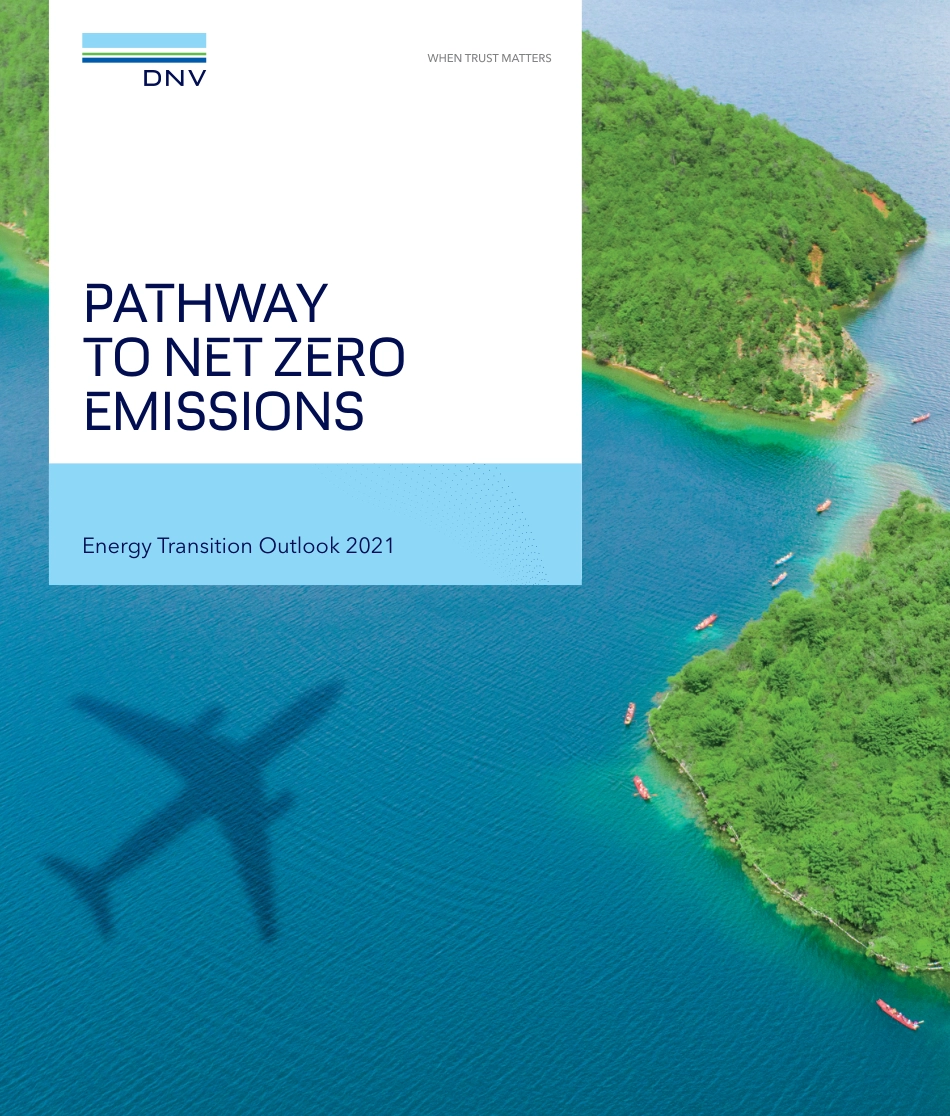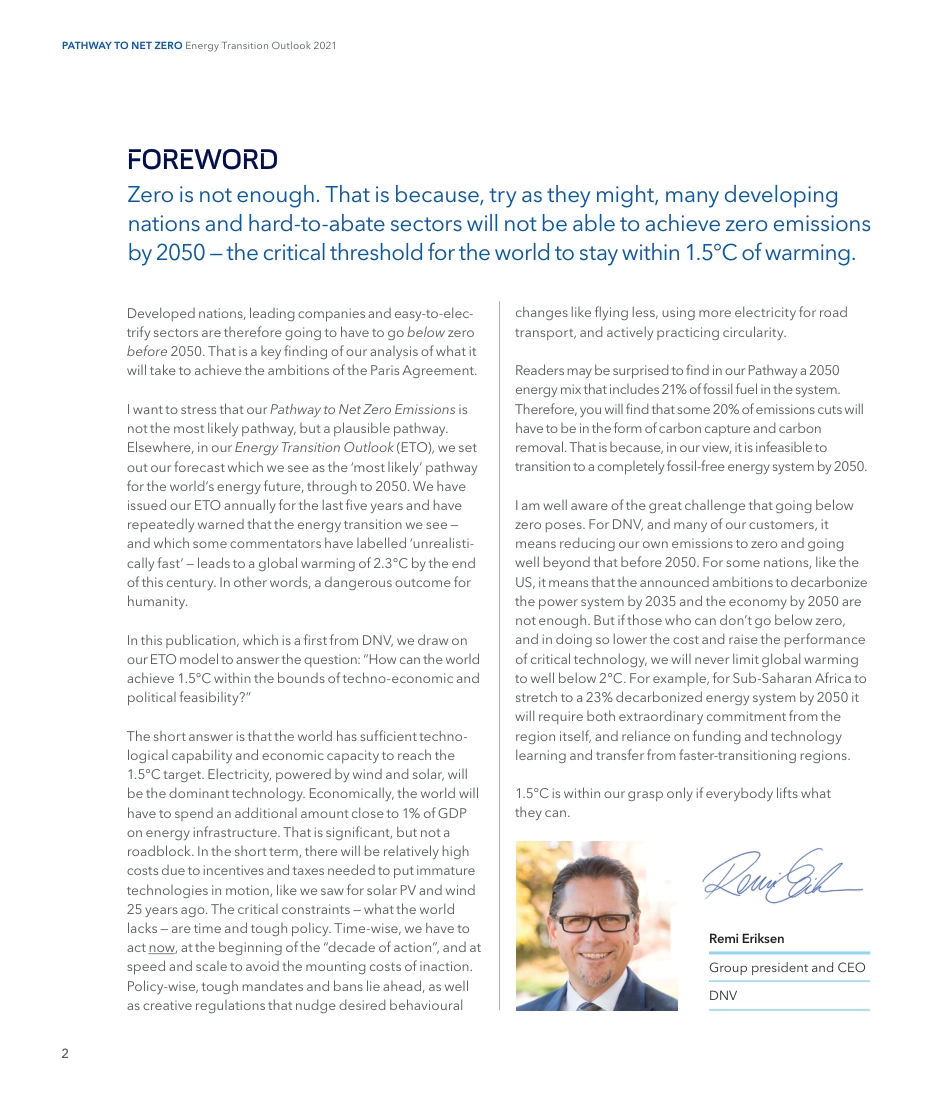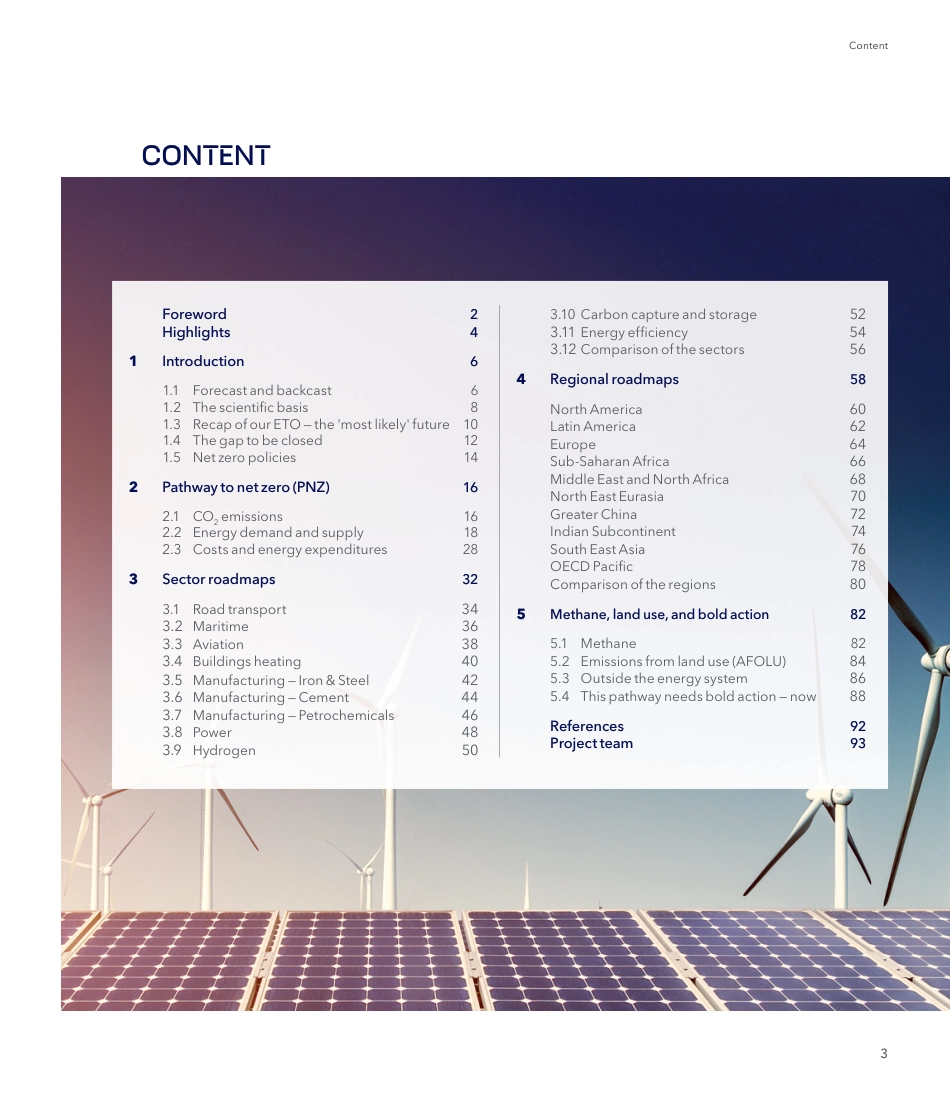PATHWAY TO NET ZERO EMISSIONSEnergy Transition Outlook 2021PATHWAY TO NET ZERO Energy Transition Outlook 20212Developed nations, leading companies and easy-to-elec-trify sectors are therefore going to have to go below zero before 2050. That is a key finding of our analysis of what it will take to achieve the ambitions of the Paris Agreement. I want to stress that our Pathway to Net Zero Emissions is not the most likely pathway, but a plausible pathway. Elsewhere, in our Energy Transition Outlook (ETO), we set out our forecast which we see as the ‘most likely’ pathway for the world’s energy future, through to 2050. We have issued our ETO annually for the last five years and have repeatedly warned that the energy transition we see — and which some commentators have labelled ‘unrealisti-cally fast’ — leads to a global warming of 2.3°C by the end of this century. In other words, a dangerous outcome for humanity.In this publication, which is a first from DNV, we draw on our ETO model to answer the question: “How can the world achieve 1.5°C within the bounds of techno-economic and political feasibility?”The short answer is that the world has sufficient techno-logical capability and economic capacity to reach the 1.5°C target. Electricity, powered by wind and solar, will be the dominant technology. Economically, the world will have to spend an additional amount close to 1% of GDP on energy infrastructure. That is significant, but not a roadblock. In the short term, there will be relatively high costs due to incentives and taxes needed to put immature technologies in motion, like we saw for solar PV and wind 25 years ago. The critical constraints — what the world lacks — are time...



